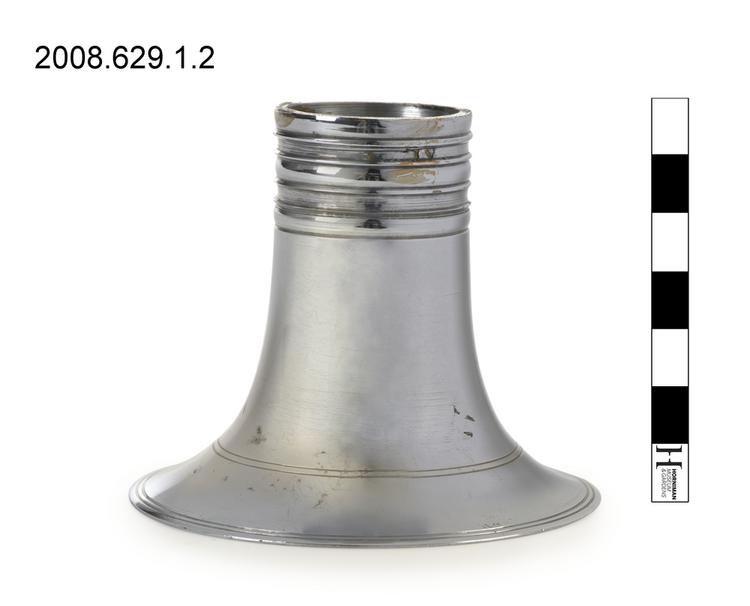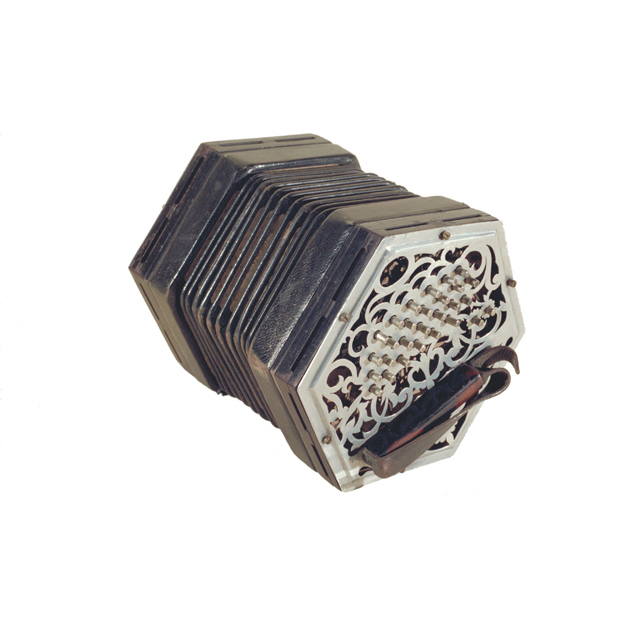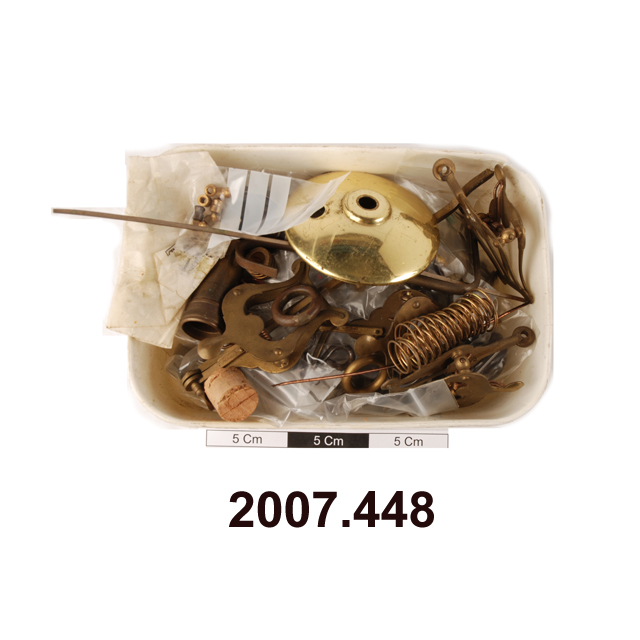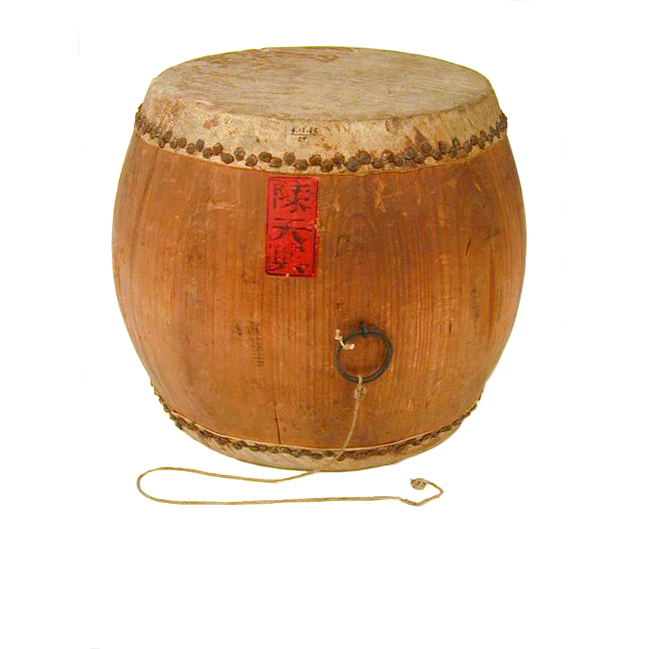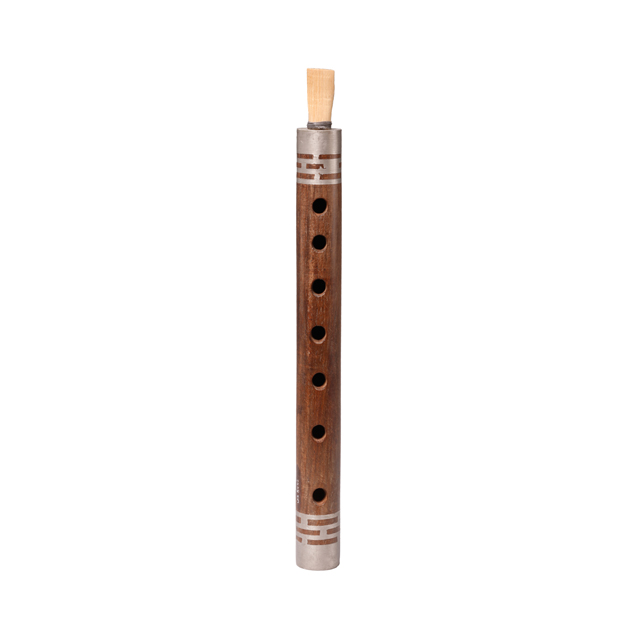
Guan (kuan tze), a double reed cylindrical bore oboe with seven fingerholes and one thumbhole, half way between holes 1 and 2. Dark heavy wood inlaid with pewter. The reeds (10.8.62/1a and 10.8.62/1b) are double and made of cane bound with wire. They are soaked for at least ten minutes before playing. The instrument probably dates from circa 1960. Bought from Collets.
The Chinese guan has a double reed like a Western oboe, but has a distinctly different sound as a result of its cylindrical rather than conical bore. Its strident tone has proved popular in a number of different musical contexts in China for both accompanying and imitating nasal styles of singing. During the Tang dynasty (618 - 907 AD) the guan gained a prominent role in courtly music and was used in a similar way to the hichiriki, the equivalent oboe of Japanese court music. It has since declined in importance within the tradition of court orchestra music but remained popular in regional instrumental ensembles. In recent years the guan has declined further in popularity as a result of the increasing use of the Western saxophone, which has all but replaced it in Cantonese ensembles and theatre traditions.



